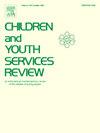家庭种族及其相关因素在社工风险认知中的作用:来自匈牙利小故事研究的证据
IF 2.4
2区 社会学
Q1 FAMILY STUDIES
引用次数: 0
摘要
研究表明,一些少数民族家庭的儿童在儿童保护系统中的比例过高。基于种族的待遇是有问题的,因为它对儿童保护决策是否基于 "儿童最大利益 "原则提出了质疑。在许多欧洲国家的儿童保护系统中,罗姆儿童的比例也过高,但很少有研究探讨其原因。本研究试图通过考察儿童福利工作者在儿童保护决策早期阶段对风险的认识来填补这一空白。主要的研究问题是,如果父母是罗姆人,他们是否会认为存在更高的风险。研究方法:我们使用的数据来自 2018 年在匈牙利儿童福利工作者(N = 600)中进行的基于小故事的调查。使用多层次序数逻辑回归分析了影响社工风险认知的因素。风险感知的回归模型包括个案变量(对儿童的伤害、父母的种族、母亲的教育程度、父母的就业情况、住房条件、生活环境、父母酗酒、母亲的合作意愿)和社会工作者的个人特征。对种族进行了单独研究,以及与其他案例特征的交互研究。结果:研究结果表明,儿童受到身体伤害、父母酗酒、生活环境脏乱以及母亲不合作的行为会增加儿童福利工作者感知到的风险水平。没有证据表明父母的社会经济地位与社会工作者的风险感知之间存在统计学关联。家庭种族对风险感知也没有显著的统计学影响(主效应)。然而,当家庭为罗姆人血统时,一些个案特征会对风险感知产生不同的影响(交互效应)。身体虐待对社工的风险认知有很大影响,但当家庭为罗姆人血统时,这种影响就比较小。同样,母亲的不合作行为也是一个增加风险的因素,但对于罗姆家庭来说,这种影响消失了。结论:尽管在社工对风险的认识上没有发现种族偏见,但我们的研究结果表明,与多数家庭相比,罗姆家庭对风险的认识较少依赖于个案的具体情况。在某些情况下,这可能会导致不合理地高估风险,或者相反,在罗姆人家庭的情况下低估风险。本文章由计算机程序翻译,如有差异,请以英文原文为准。
The role of the family’s ethnicity and correlates in social workers’ risk perceptions: Evidence from a vignette study in Hungary
Studies have shown that children from some ethnic minority families are disproportionately represented in the child protection system. Ethnic-based treatment is problematic because it challenges whether child protection decision-making is based on the principle of ’the best interests of the child’. Roma children are also overrepresented in the child protection systems of many European countries, but little research has explored why this is so. The present study seeks to address this gap by examining child welfare workers’ perceptions of risk at the early stages of child protection decision-making. The main research question is whether they perceive higher levels of risk if the parents are Roma. Method: We use data from a vignette-based survey conducted among child welfare workers (N = 600) in Hungary in 2018. The factors influencing social workers’ risk perceptions are analysed using multilevel ordinal logistic regressions. The regression models of risk perception include case variables (harm to child, parents’ ethnicity, mother’s education, parents’ employment, housing conditions, living environment, parental alcoholism, mother’s willingness to cooperate), and the individual characteristics of the social worker. Ethnicity is examined individually as well as in interaction with other case characteristics. Results: Findings show that physical harm to the child, parental alcoholism, a messy living environment, and the non-cooperative behaviour of the mother increase the level of risk perceived by child welfare workers. There is no evidence of a statistical association between parental socioeconomic status and the social worker’s perception of risk. Family ethnicity also does not have a statistically significant impact on risk perception (main effect). However, some case characteristics affect risk perception differently when the family is of Roma origin (interaction effects). Physical abuse has a strong effect on the social worker’s perception of risk, but this effect is more modest when the family is of Roma origin. Likewise, the mother’s non-cooperative behaviour is a risk-increasing factor, but this effect disappears for Roma families. Conclusions: Although, no ethnic bias was found in social workers’ perception of risk, our findings indicate that the perception of risk for Roma families is less dependent on the circumstances of the case than for majority families. In some cases, this may lead to an unjustified overestimation of risk or, conversely, an underestimation when the family is Roma.
求助全文
通过发布文献求助,成功后即可免费获取论文全文。
去求助
来源期刊

Children and Youth Services Review
Multiple-
CiteScore
6.30
自引率
6.10%
发文量
303
期刊介绍:
Children and Youth Services Review is an interdisciplinary forum for critical scholarship regarding service programs for children and youth. The journal will publish full-length articles, current research and policy notes, and book reviews.
 求助内容:
求助内容: 应助结果提醒方式:
应助结果提醒方式:


